
Comprendre pour mieux agir. La radicalisation menant à la violence chez les jeunes. Guide à l’intention du personnel scolaire
Audet, G., Fleury, R., Miconi, D., Rousseau, C. et Plante Thibodeau, S. (2024)
Montréal : RAPS, CREDEF et SHERPA | 21 p.
VOIR LA PUBLICATION >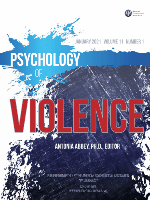
Multiple group identities and support for violent radicalization among college and university students: Challenge or opportunity?
Miconi, D., Levinsson, A., & Rousseau, C. (2024, janvier)
Psychology of Violence
Vol 14/Num. 02: American Psychological Association | 10 p.
VOIR LA PUBLICATION >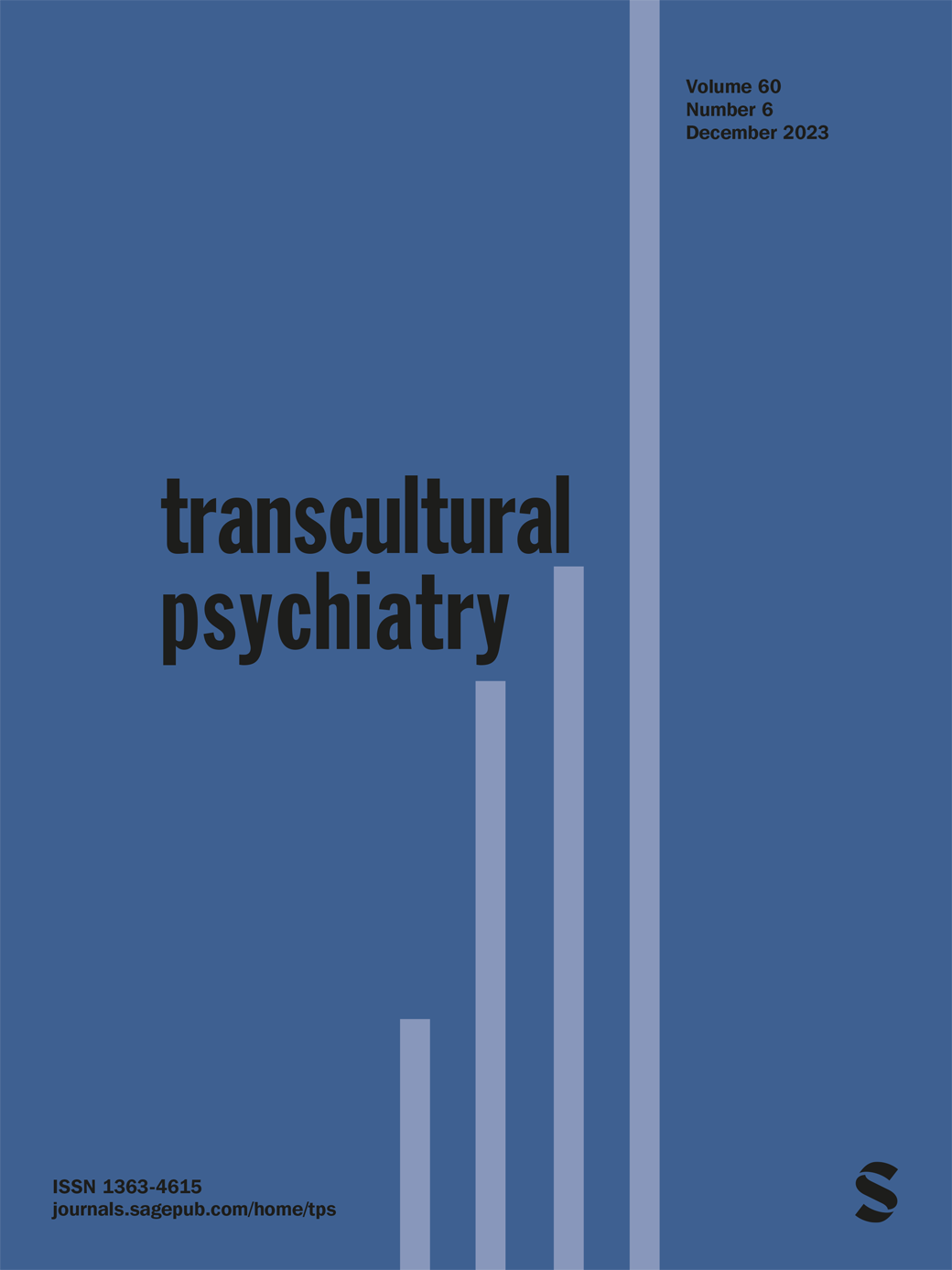
“It will always be Temporary”: A qualitative study of Syrian young adults expressing histories of collective violence and forced displacement in participatory theatre
de Smet, S., Rousseau, C., Stalpaert, C., & De Haene, L. (2024, janvier)
Transcultural Psychiatry
Vol 60/ Num. 6
VOIR LA PUBLICATION >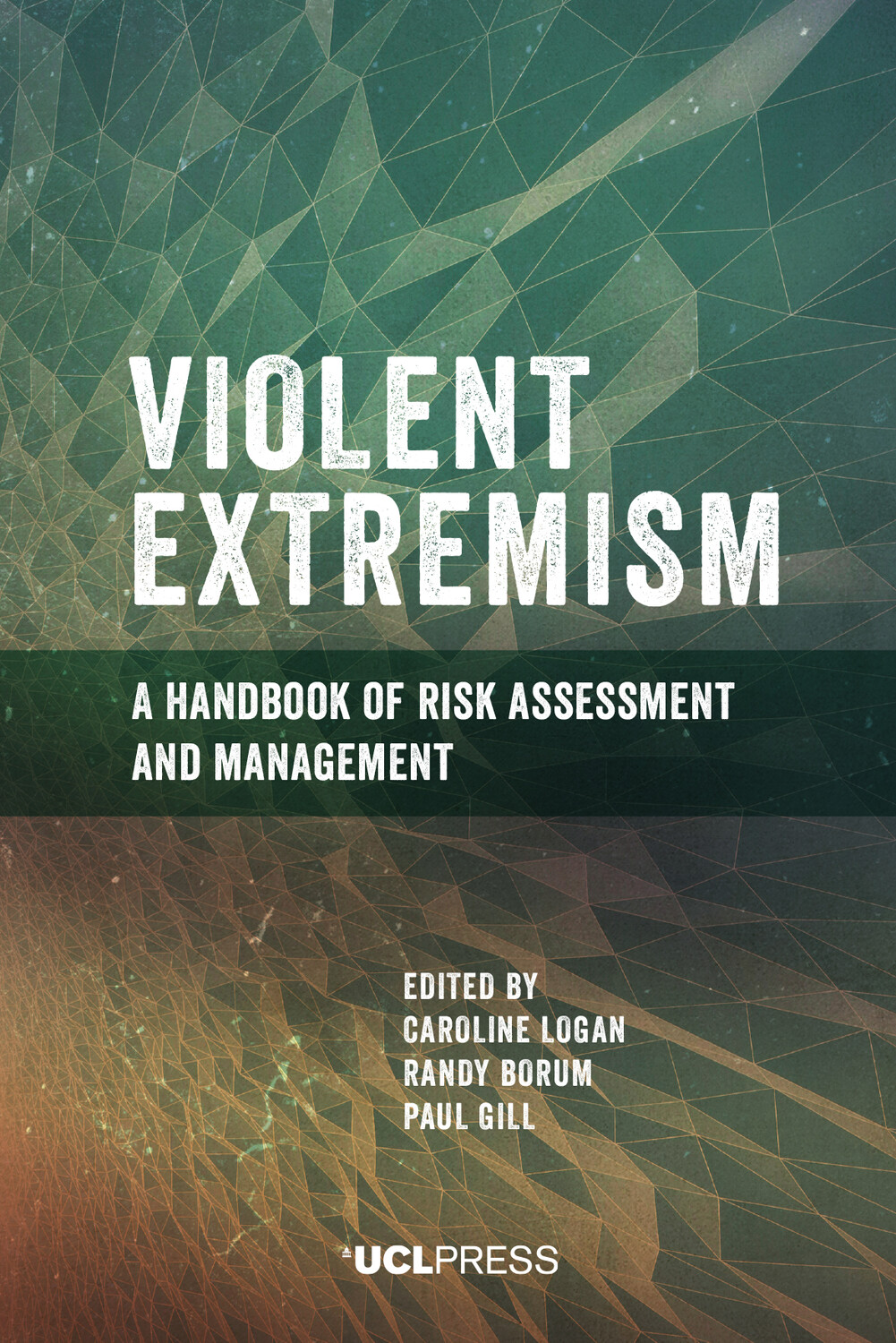
Risk for violent radicalization : Do primary, secondary, and tertiary prevention programmes effectively address risk and protective factors? In Violent Extremism A handbook of risk assessment and management
Hassan, G., Brouillette-Alarie, S., & Ousman, S. (2023, novembre)
Violent Extremism A handbook of risk assessment and management
UCL Press | p.178
VOIR LA PUBLICATION >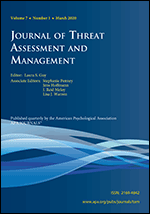
Risk assessment challenges in a specialized clinic for individuals referred for violent extremism
Rousseau, C., Johnson-Lafleur, J., Ngov, C., La Rochelle, X., Brouillette-Alarie, S., Gignac, M., ... & Crocker, A. (2023)
Journal of Threat Assessment and Management
VOIR LA PUBLICATION >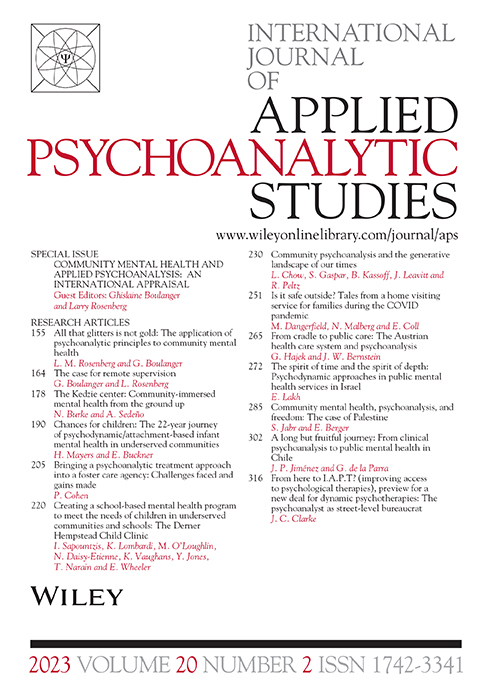
Self-representation and future perception of youth followed by a specialized intervention team in violent radicalization
Desmarais, C., Rousseau, C. (2023, aout)
Applied Psychoanalytic Studies
Vol. 20/Num. 02 : Onlinelibrary
VOIR LA PUBLICATION >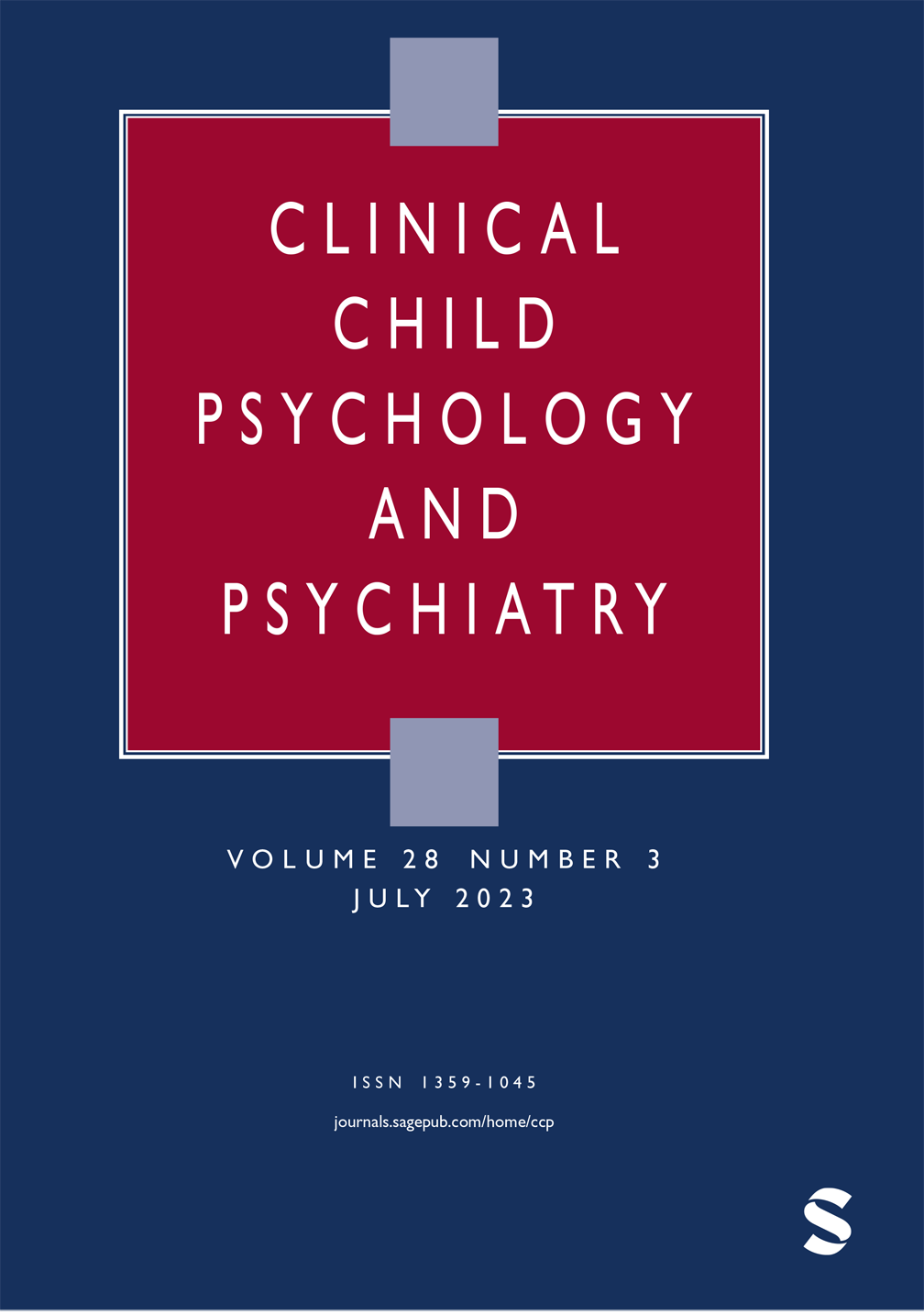
Children of extremist parents: Insights from a specialized clinical team
Rousseau, C., Miconi, D., Johnson-Lafleur, J., Desmarais,C., et Hassan, G. (2023, aout)
Clinical Child Psychology and Psychiatry
Vol. 28/Num. 3
VOIR LA PUBLICATION >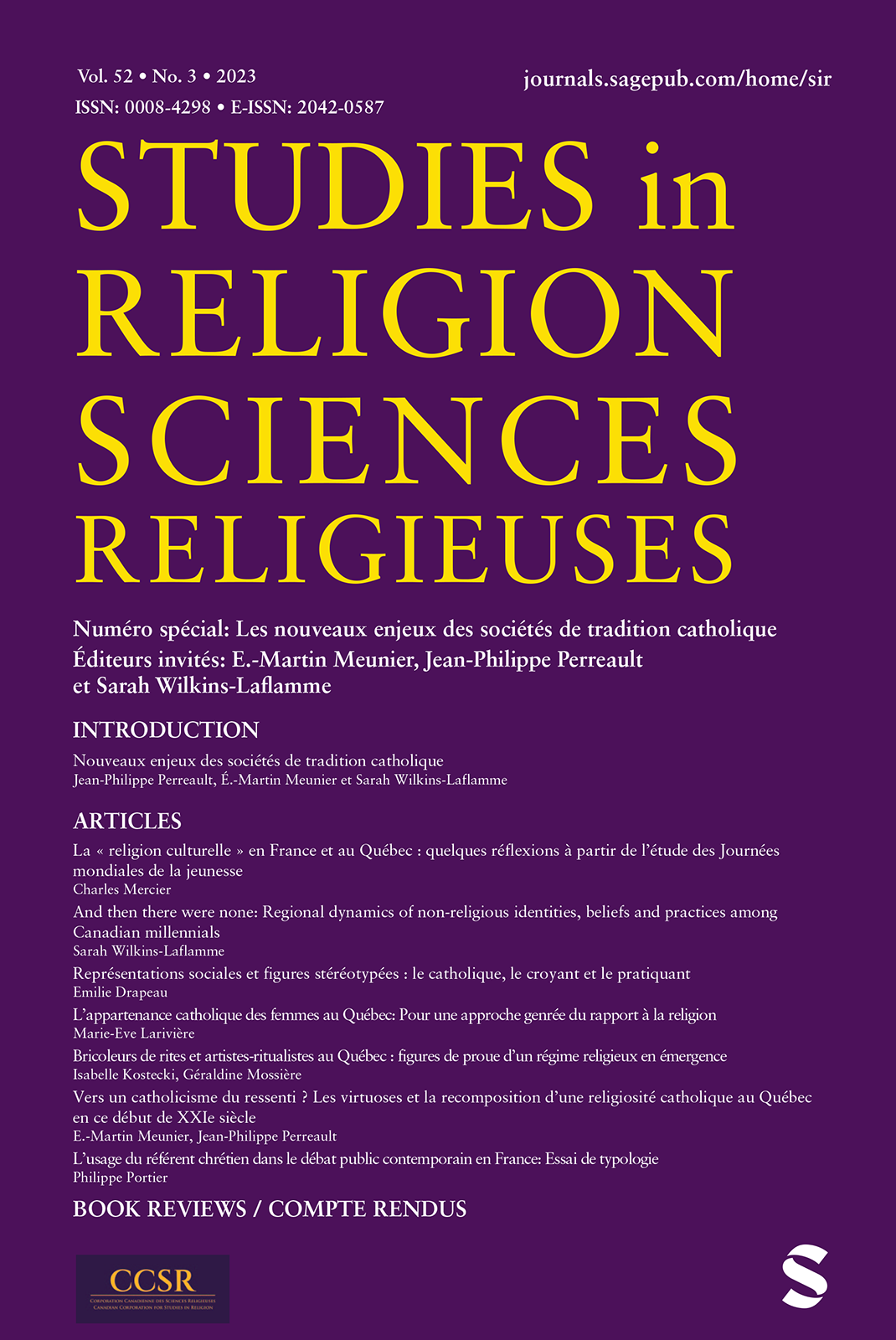
Bricoleurs de rites et artistes-ritualistes au Québec : figures de proue d’un régime religieux en émergence
Kostecki, I., & Mossière, G. (2023, juin)
Studies in Religion/Sciences Religieuses
Vol. 52/Num.: 3 | 22 p.
VOIR LA PUBLICATION >
Social and individual grievances and attraction to extremist ideologies in individuals with autism: Insights from a clinical sample
Rousseau, C., Johnson-Lafleur, J., Ngov, C., Miconi, D., Mittermaier, S., Bonnel, A., Savard, C., & Veissière, S. (2023, juin)
Research in Autism Spectrum Disorders
Vol.105/ Num.: 102171 | 12 p.
VOIR LA PUBLICATION >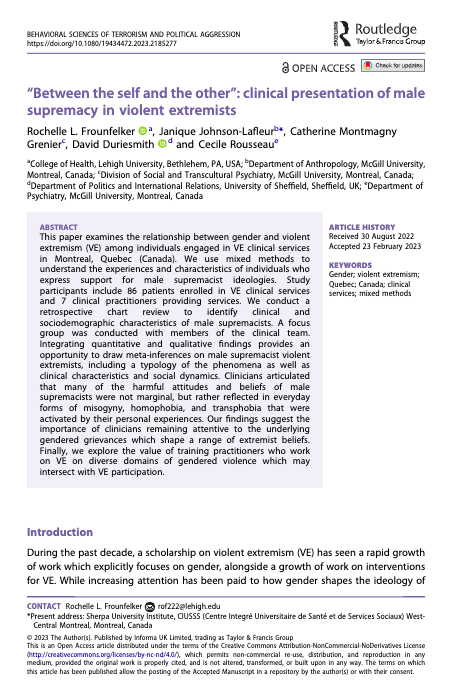
“Between the self and the other”: clinical presentation of male supremacy in violent extremists
Frounfelker, R. L., Johnson-Lafleur, J., Grenier, C. M., Duriesmith, D., Rousseau, C. (2023, mars)
Behavioral Sciences of Terrorism and Political Aggression
VOIR LA PUBLICATION >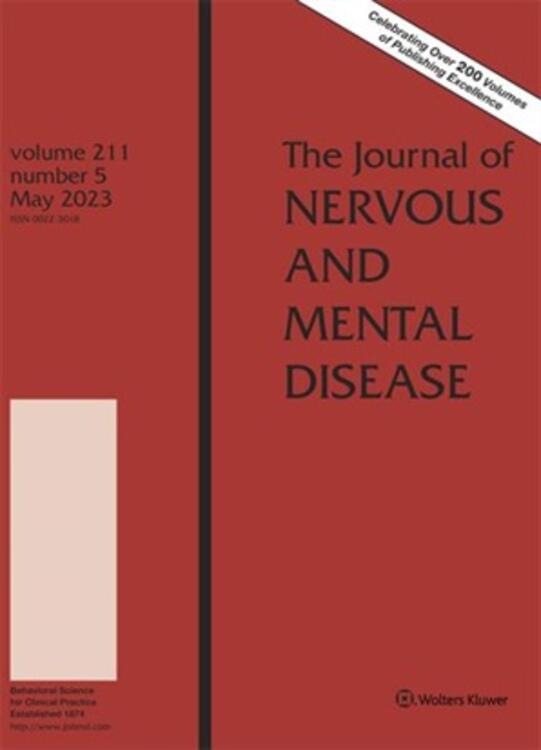
Violent Radicalization, Mental Health, and Gender Identity Considerations for Future Research
Li, Z. Y., Frounfelker, R. L., Miconi, D., Levinsson, A., & Rousseau, C. (2023, mars)
The Journal of Nervous and Mental Disease
Vol. 211/ Num.: 3 | 3 p.
VOIR LA PUBLICATION >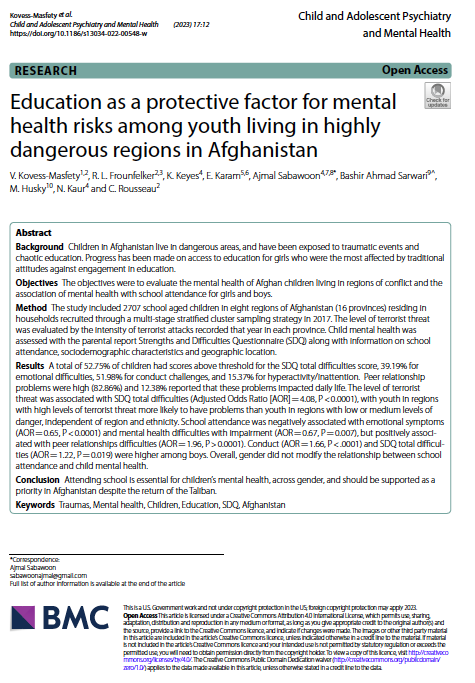
Education as a protective factor for mental health risks among youth living in highly dangerous regions in Afghanistan
Kovess-Masfety, V., Frounfelker, R.L., Keyes, K., Rousseau, C. (2023, janvier)
Child and Adolescent Psychiatry and Mental Health
Vol.17/ Article number: 12 : Research Open Access | 13 p.
VOIR LA PUBLICATION >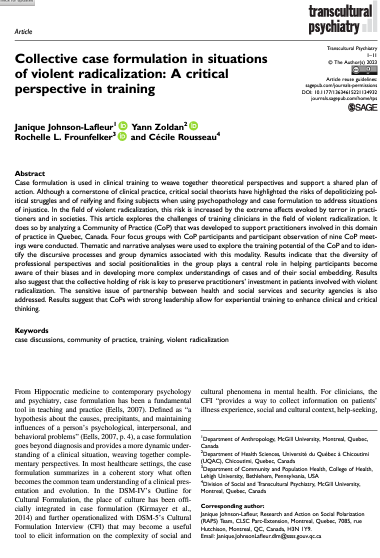
Collective case formulation in situations of violent radicalization: A critical perspective in training
Johnson-Lafleur, J., Zoldan, Y., Frounfelker, RL., Rousseau, C. (2023, janvier)
Transcultural Psychiatry
SAGE Journals | 11 p.
VOIR LA PUBLICATION >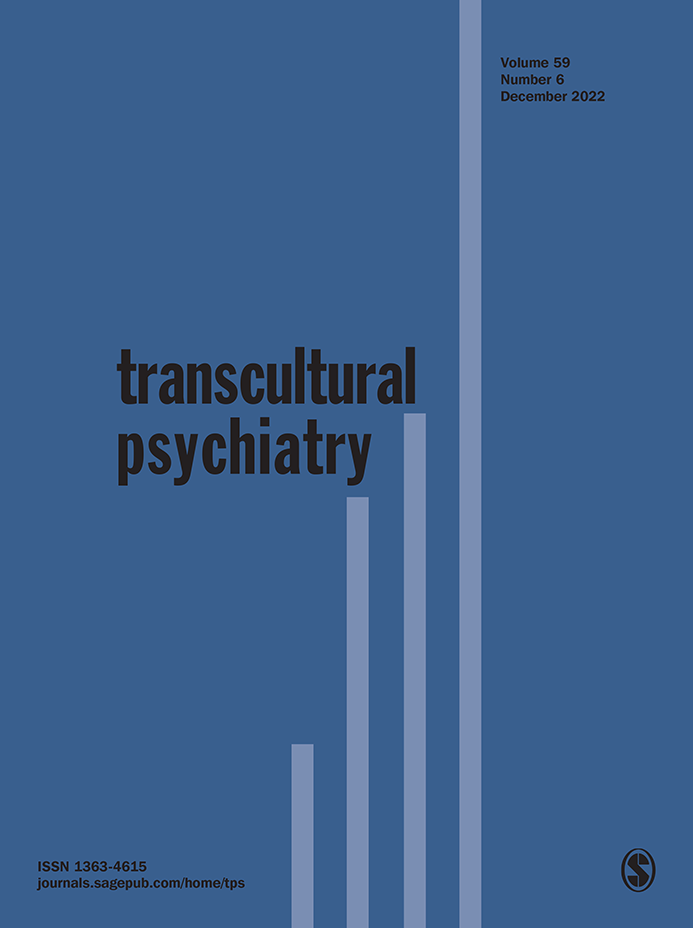
Collective case formulation in situations of violent radicalization: A critical perspective in training.
Johnson-Lafleur, J., Zoldan, Y., Frounfelker, R. L., & Rousseau, C. (2023, janvier)
Transcultural Psychiatry
OnlineFirst | 11 p.
VOIR LA PUBLICATION >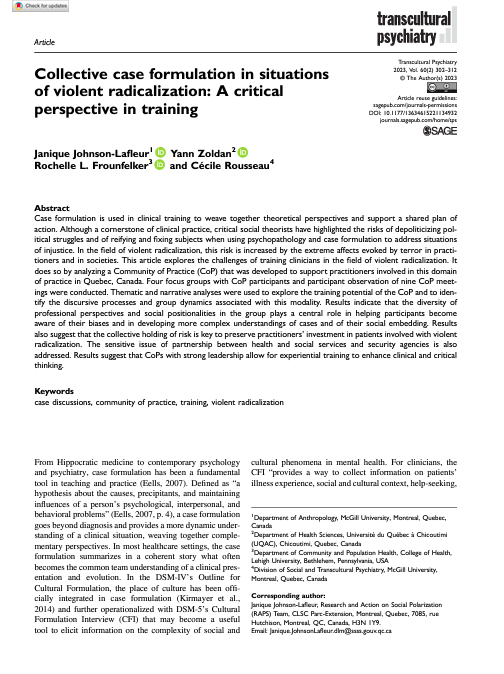
Collective case formulation in situations of violent radicalization: A critical perspective in training
Johnson-Lafleur, J., Zoldan, Y.,Frounfelker, R. L., Rousseau, C. (2023, janvier)
Transcultural Psychiatry
Vol. 60/ Num. 2 : SAGE Journals | 11 p.
VOIR LA PUBLICATION >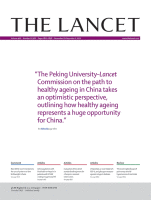
Forced to uphold white supremacy, until we couldn’t anymore
Banerjee, A., Tan, A. (2022, novembre)
PERSPECTIVES|THE ART OF MEDICINE| The Lancet
VOL. 400/ Num. 10366 | 2 p.
VOIR LA PUBLICATION >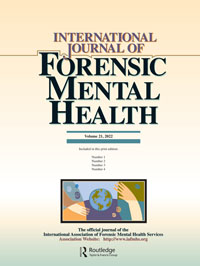
Clinical Services Addressing Violent Extremism: The Quebec Model
Rousseau, C., Frounfelker, R., Ngov, C., & Crocker, A. (2022, novembre)
International Journal of Forensic Mental Health
VOIR LA PUBLICATION >
L’art et la violence : quels frayages ? Réflexions inspirées d’un projet pilote en prévention de la radicalisation violente chez les jeunes
Bourgeois-Guérin, É., Aldebert, J., Rousseau, C. (2022, octobre)
Danser seul(e)s : la jeunesse entre individualisation, individualisme, singularité, auto-entrepreneuriat et nouvelles formes de sociation
Vol. 18 / Sciences et actions sociales (ACOFIS) | 16 p.
VOIR LA PUBLICATION >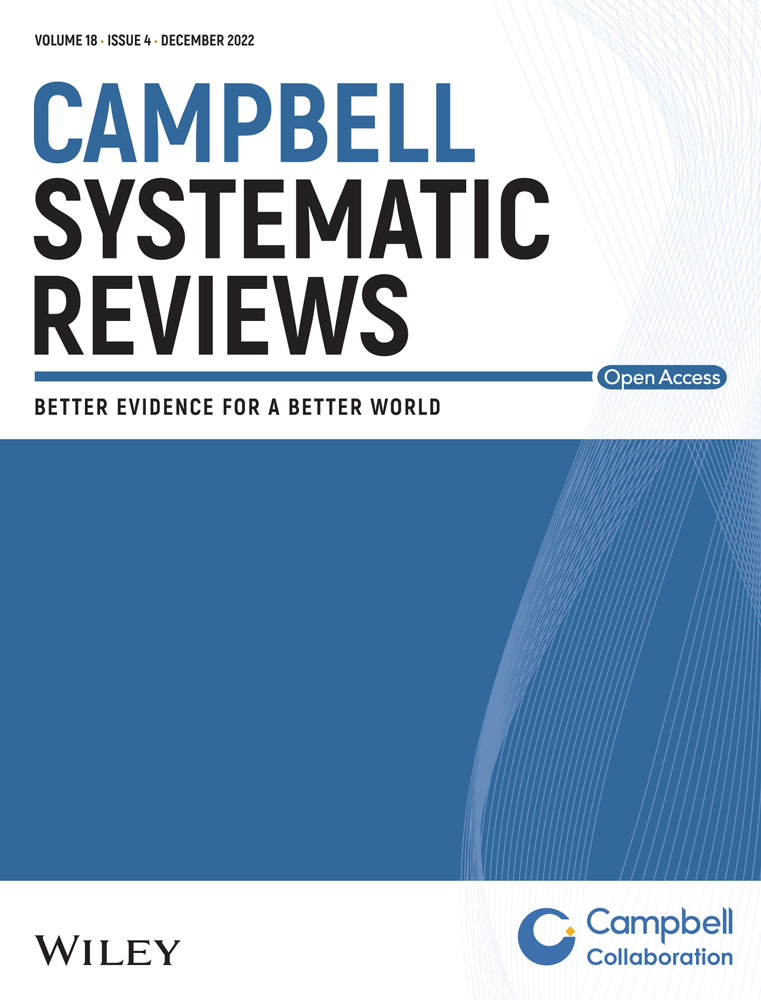
PROTOCOL: Are tools that assess risk of violent radicalization fit for purpose? A systematic review
Hassan, G., Brouillette-Alarie, S., Ousman, S., Madriaza, P., Varela, W., Danis, E., Kilinc, D., Pickup, D., Borokhovski, E. and Cpn-Prev Team (2022, octobre)
Campbell Systematic Reviews
Vol. 18/ Issue | 15 p.
VOIR LA PUBLICATION >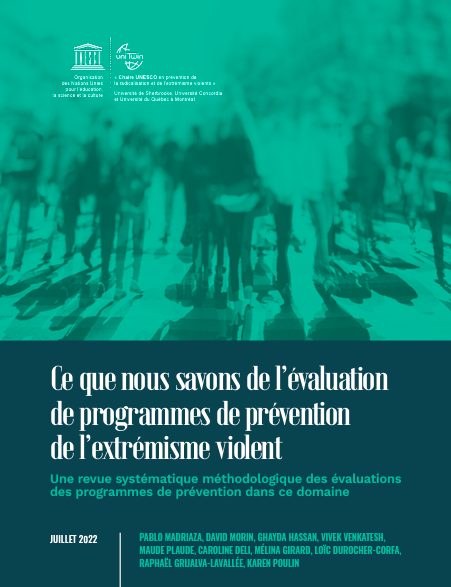
Ce que nous savons de l’évaluation de programmes de prévention de l’extrémisme violent : Une revue systématique méthodologique des évaluations des programmes de prévention dans ce domaine
Madriaza, P., Morin, D., Hassan, G., Venkatesh, V., Plaude, M., Deli, C., Girard, M., Durocher-Corfa, L., Grijalva-Lavallée, R., & Poulin, K. (2022, juillet)
Chaire UNESCO en prévention de la radicalisation et de l’extrémisme violents (Chaire UNESCO-PREV). | 138 p.
VOIR LA PUBLICATION >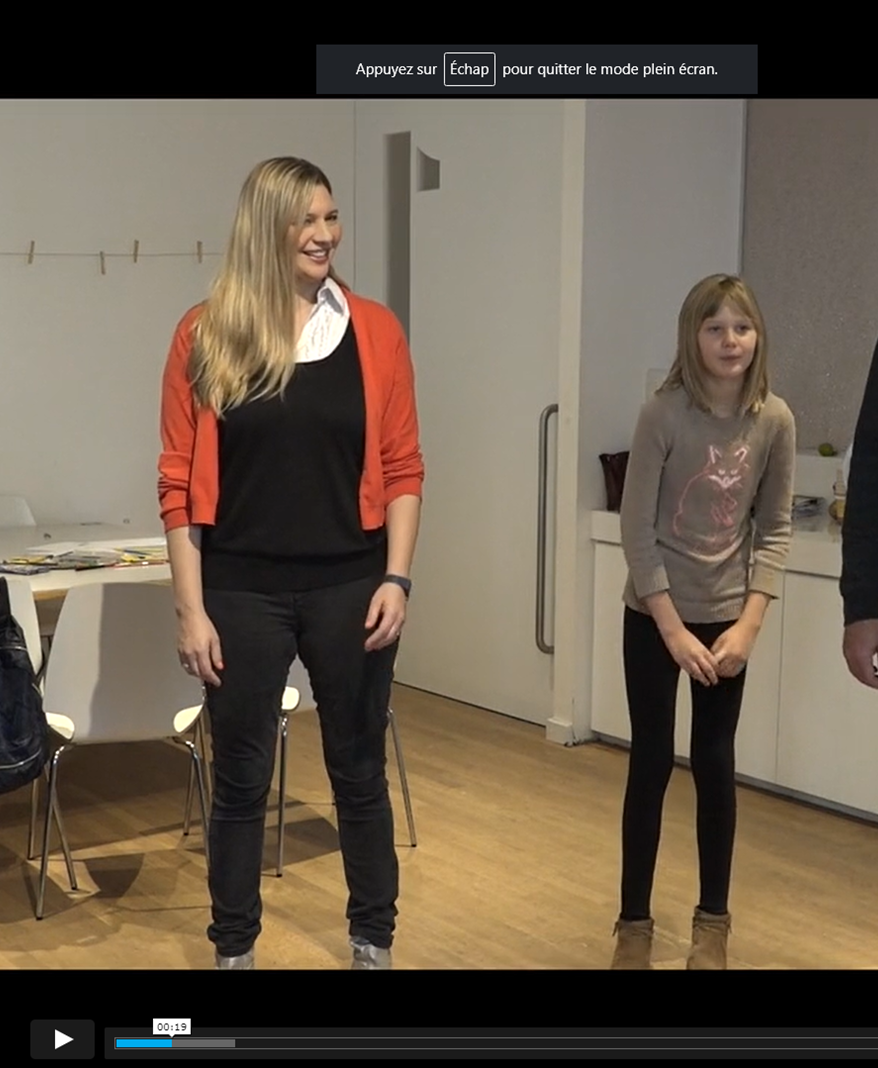
Talking about violence in the news with children
Cécile Rousseau, Tomas Sierra Audrey L-Lachaîne, Anousheh Mashouf, Élise Bourgeois-Guérin et Marie-Ève Paré (2018)
Vidéo | Montréal :SHERPA
VOIR LA PUBLICATION >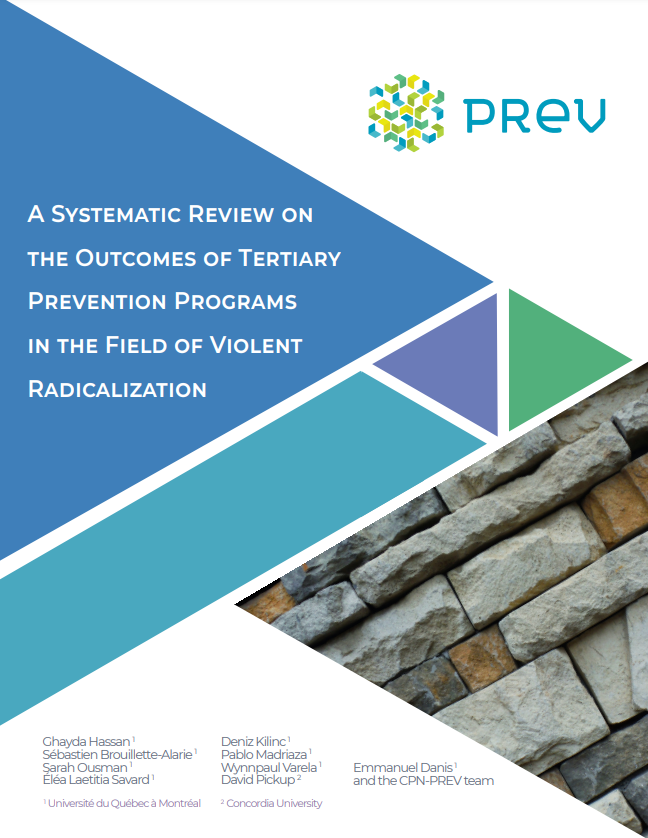
A systematic review on the outcomes of tertiary prevention programs in the field of violent radicalization
Hassan, G., Brouillette-Alarie, S., Ousman, S., Savard, É. L., Kilinc, D., Madriaza, P., Varela, W., Pickup, D., Danis, E., & the CPN-PREV team. (2021)
Canadian Practitioners Network for the Prevention of Radicalization and Extremist Violence | 95 p.
VOIR LA PUBLICATION >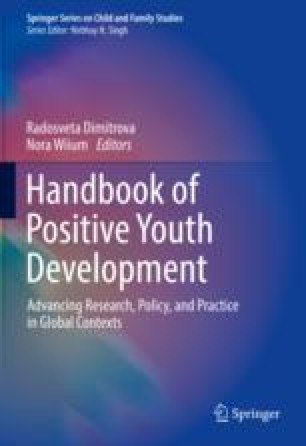
Another Way Out: A Positive Youth Development Approach to the Study of Violent Radicalization in Québec, Canada
Miconi, D. et C. Rousseau (2021)
Handbook of Positive Youth Development (Radosveta Dimitrova et Nora Wiium dirs.)
Springer Series on Child and Family Studies | P. 415-429
VOIR LA PUBLICATION >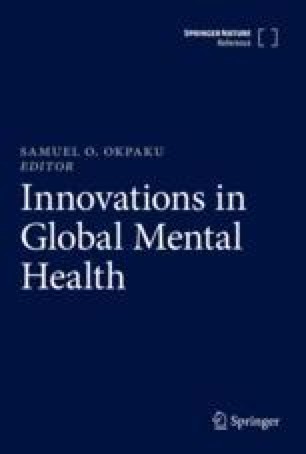
Rethinking Radicalization Leading to Violence as a Global Health Issue
Miconi, D.; Frounfelker, R.L.; Zoldan, Y. et C. Rousseau (2021)
Innovations in Global Mental Health
online 03 November 2021 | p. 203-220
VOIR LA PUBLICATION >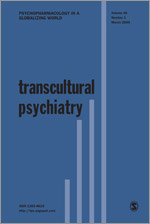
Evaluation of a training program on the prevention of violent radicalization for health and education professionals
Bourgeois-Guérin, E.; Miconi, D.; Rousseau-Rizzi, A et C. Rousseau (2021, octobre)
Transcultural Psychiatry
VOIR LA PUBLICATION >
Discrimination and Sympathy for Violent Radicalization Among College Students in Quebec (Canada): The Protective Role of Intrinsic and Extrinsic Religiosity
Miconi, Diana; Frounfelker, Rochelle L.; Whiteley, Tessa; Mekki-Berrada, Abdelwahe et Cécile Rousseau (2021)
The Journal of Nervous and Mental Disease
209(10) | pp. 773-776
VOIR LA PUBLICATION >
Intercultural Training in Tense Times: Cultural Identities and Lived Experiences Within a Community of Practice of Youth Mental Health Care in Montréal
Johnson-Lafleur, J., Nadeau, L. & Rousseau, C. (2021)
Cult Med Psychiatry
VOIR LA PUBLICATION >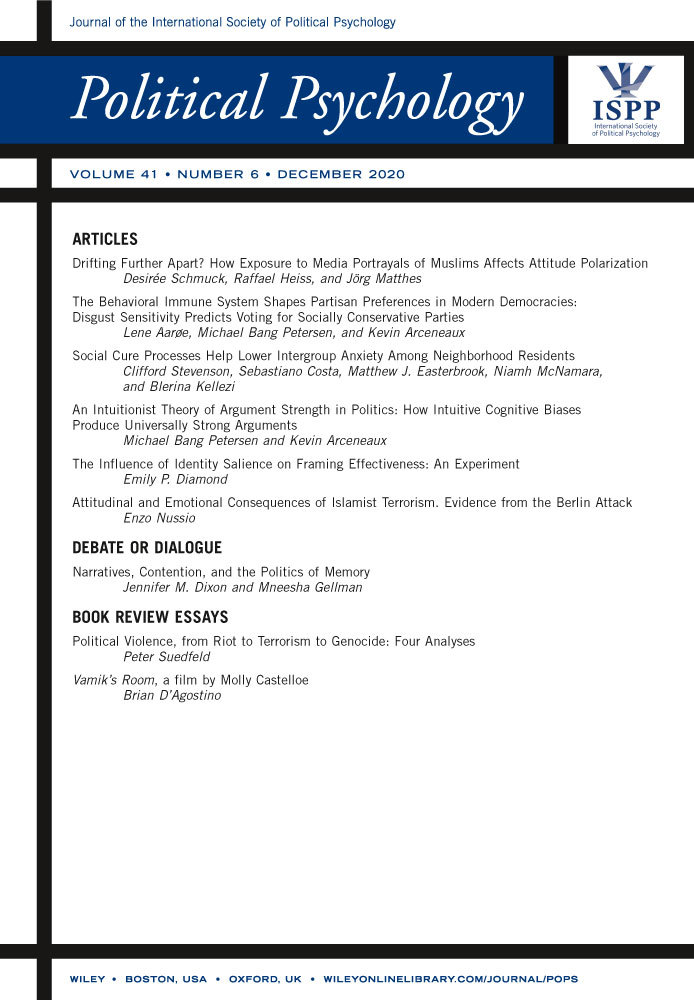
Are there Local Differences in Support for Violent Radicalization? A Study on College Students in the Province of Quebec, Canada
Miconi, D., Calcagnì, A., Mekki‐Berrada, A. et C. Rousseau (2020)
Political Psychology
online 13 décembre 2020
VOIR LA PUBLICATION >
Vivere insieme in contesti di polarizzazione sociale: fattori di rischio e di protezione in un campione di giovani studenti canadesi / Living Together in Socially Polarised Contexts : Risk and Protective Factors in a Sample of Canadian College Students
Miconi, D., Rousseau, C. (2020)
Educationla Reflexive Practice
1 | pp. 55-73
VOIR LA PUBLICATION >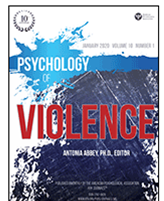
Sympathy for violent radicalization among college students in Quebec (Canada): The protective role of a positive future orientation
Miconi, Diana & Oulhote, Youssef & Hassan, Ghayda & Rousseau, Cécile (2020)
Psychology of Violence
10(3) | 344-354
VOIR LA PUBLICATION >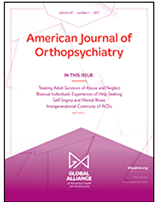
A repeated cross-sectional study of sympathy for violent radicalization in Canadian college students
Rousseau, Cécile; Miconi, Diana; Frounfelker, Rochelle; Hassan, Ghayda; Oulhote, Youssef (2020, janvier)
American Journal of Orthopsychiatry
VOIR LA PUBLICATION >
Islamophobie viriliste et radicalisation islamophobe. Prolégomènes à une réhabilitation de la notion d’islamophobie
Mekki-Berrada, Abdelwahed (2019)
Religiologiques
39 | p. 5-49
VOIR LA PUBLICATION >
Répertoire de ressources. Annexe aux modules de formation “Comprendre pour mieux prévenir : la radicalisation violente chez les jeunes”
RAPS-SHERPA (2019)
Montréal : RAPS-SHERPA | 79 p.
VOIR LA PUBLICATION >
Analyse des risques et bénéfices en termes de santé publique de la future loi 21 sur la laïcité de l’État – version abrégée
Rousseau, Cécile; Hanley, Jill; Audet, Geneviève; Cleveland, Janet; Hassan, Ghayda; Johnson-Lafleur, Janique; Mekki-Berrada, Abdelwahed; Michalon-Brodeur, Victorine et Maryse Potvin (2019)
Montréal : Institut universitaire SHERPA | 1
VOIR LA PUBLICATION >
Analyse des risques et bénéfices en termes de santé publique de la future loi 21 sur la laïcité de l’État
Rousseau, Cécile; Hanley, Jill; Audet, Geneviève; Cleveland, Janet; Hassan, Ghayda; Johnson-Lafleur, Janique; Mekki-Berrada, Abdelwahed; Michalon-Brodeur, Victorine et Maryse Potvin (2019)
Montréal : Institut universitaire SHERPA | 13
VOIR LA PUBLICATION >
Penser la haine après le trauma
Bourgeois-Guérin, É., Brami, M., Rousseau, C. (2019)
Rhizome- Bulletin national santé mentale et précarité
69-70 | 34-35
VOIR LA PUBLICATION >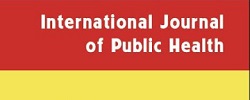
Exploring the Discrimination–Radicalization Nexus: Empirical Evidence From Youth and Young Adults in Belgium
Frounfelker, R. L., Frissen, T., Vanorio, I., Rousseau, C., & d’Haenens, L. (2019)
International journal of public health
Online | 1-12
VOIR LA PUBLICATION >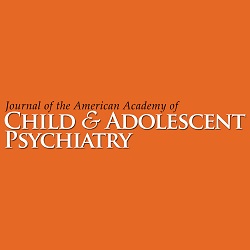
Current Challenges in Addressing Youth Mental Health in the Context of Violent Radicalization
Rousseau, C., & Hassan, G. (2019)
Journal of the american academy of child and adolescent psychiatry
https://doi.org/10.1016/j.jaac.2019.03.031
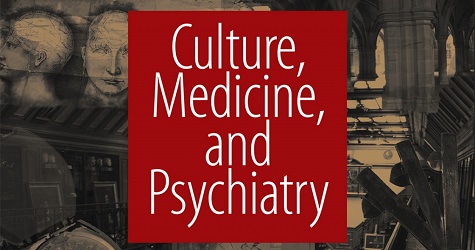
Ebola and Localized Blame on Social Media: Analysis of Twitter and Facebook Conversations During the 2014–2015 Ebola Epidemic
Roy, M., Moreau, N., Rousseau, C., Mercier, A., Wilson, A., & Atlani-Duault, L. (2019)
Culture, Medicine, and Psychiatry
https://doi.org/10.1007/s11013-019-09635-8 | 1-24

Sur la corde raide Penser les modalités de formation en prévention de la radicalisation violente
É.Bourgeois-Guérin, C. Rousseau, G. Hassan et V. Michalon-Brodeur (2019)
L'Autre
vol. 20 | 184-192
VOIR LA PUBLICATION >
Collective Identity, Social Adversity and College Student Sympathy for Violent Radicalization
Rousseau, C., Oulhote, Y., Lecompte, V., Mekki-Berrada, A., Hassan, G., & El Hage, H. (2019)
Transcultural psychiatry
VOIR LA PUBLICATION >
Re: The Role of Physicians in the Violence Epidemic
Rousseau, C., Frounfelker, R., & Hassan, G (2019)
CMAJ
On line
VOIR LA PUBLICATION >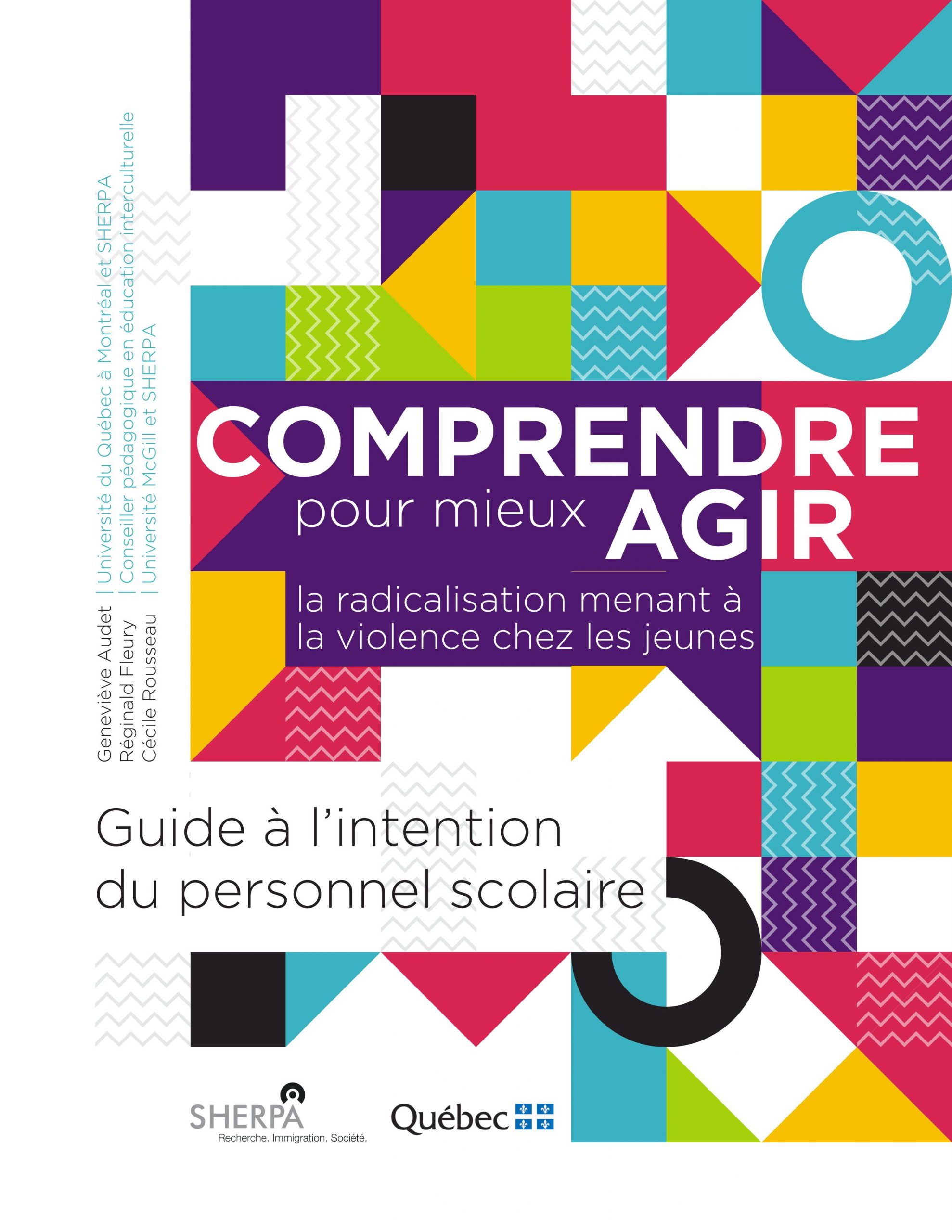
Comprendre pour mieux agir la radicalisation menant à la violence chez les jeunes. Guide à l’itnention du personnel scolaire
Audet, G.; Fleury, R. et C. Rousseau (2019)
Montréal : SHERPA | 17 p.
VOIR LA PUBLICATION >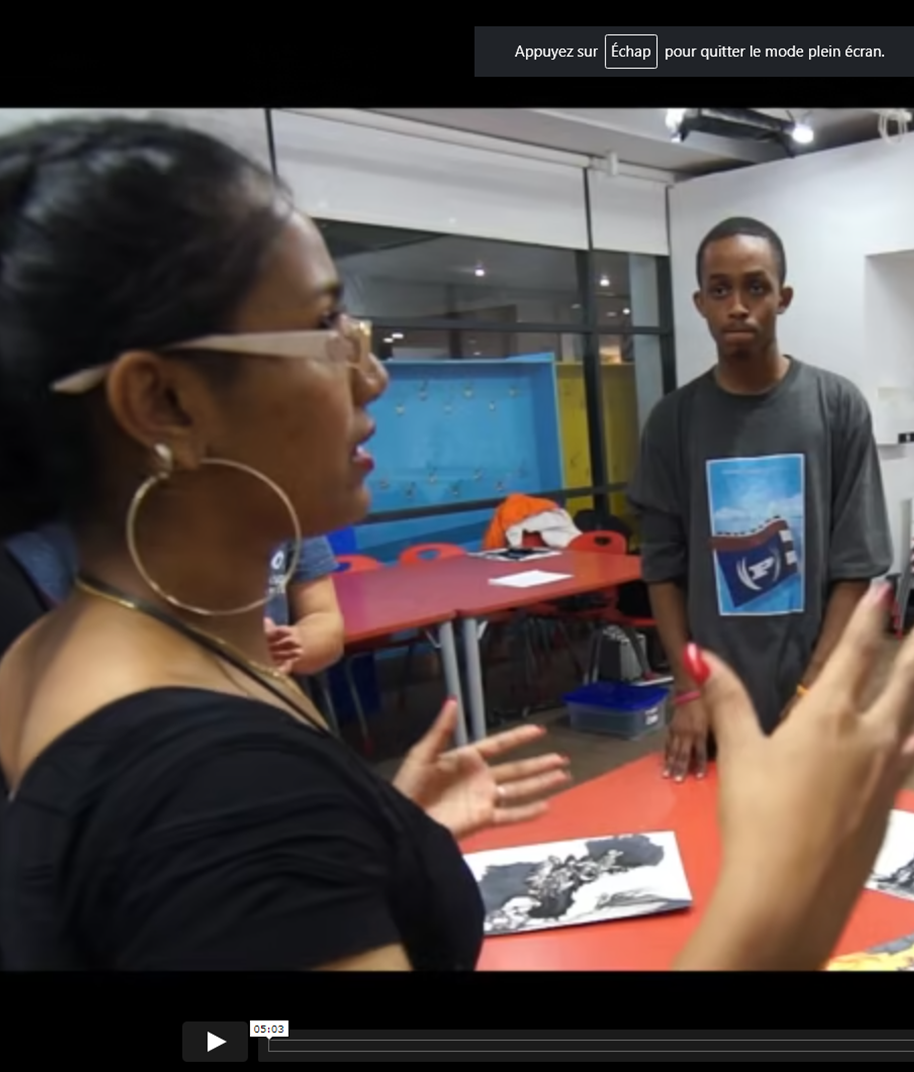
Talking about violence in the news with youth
Cécile Rousseau, Tomas Sierra Audrey L-Lachaîne, Anousheh Mashouf, Élise Bourgeois-Guérin et Marie-Ève Paré (2018)
Vidéo | Montréal : SHERPa
VOIR LA PUBLICATION >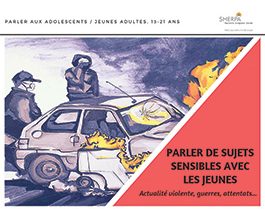
Talking about violence in the news with youth
Cécile Rousseau, Tomas Sierra Audrey L-Lachaîne, Anousheh Mashouf, Élise Bourgeois-Guérin et Marie-Ève Paré (2018)
Montréal : SHERPA | 8 p.
VOIR LA PUBLICATION >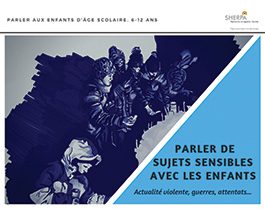
Talking about violence in the news with children
Cécile Rousseau, Tomas Sierra Audrey L-Lachaîne, Anousheh Mashouf, Élise Bourgeois-Guérin et Marie-Ève Paré (2018)
Montréal : SHERPA | 7 p.
VOIR LA PUBLICATION >
Talking about violence in the news with small children
Cécile Rousseau, Tomas Sierra Audrey L-Lachaîne, Anousheh Mashouf, Élise Bourgeois-Guérin et Marie-Ève Paré (2018)
Montréal : SHERPA | 7 p.
VOIR LA PUBLICATION >
Le rôle de l’école face à la radicalisation violente: risques et bénéfices d’une approche sécuritaire
Michalon-Brodeur, V.; Bourgeois-Guérin, É.; Cénat, JM.; Rousseau, C (2018)
Éducation et francophonie
46 | 230-248
VOIR LA PUBLICATION >Parler aux enfants de la violence du monde, à partir de l’ouvrage « L’Enfant Gazelle » de Stéphane Martelly, illustré par Albin Christen
Koukoui, S. (2018)
L'autre
19(2) | 244-247
Intervention en contexte de radicalisation menant à la violence: une approche clinique multidisciplinaire
Ben-Cheikh, I.; Rousseau, C.; Hassan, G.; Brami, M.; Hernandez, S.; Rivest, M-H. (2018)
Santé Mentale au Québec
43(1) | 85-99
